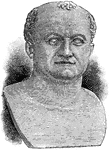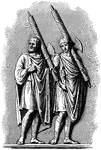
Roman Civil Servants
An illustration of two lictors, members of a special class of Roman civil servants. Lictors had special…

Sestertius
The sestertius or sesterce was an ancient silver coin during the Roman Republic and the Roman Empire.
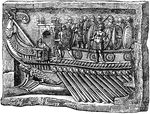
Prow of a Roman War Ship
"The representation shows the arrangement of the tiers or oars in a two-banked ship. In just what way…
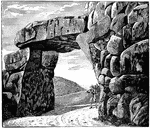
Walls of Signia
"Walls of Signia. The colony of Signia was said to have been founded by the last Tarquin; but its possession…

A Slave's Collar
"A runaway slave, if recaptured, was sometimes compelled to wear a metal collar riveted about his neck."—Webster,…

Tomb of Theodoric at Ravenna
"The two-storied marble structure is capped by an enormous monolith weighing over 300 tons."—Webster,…

Tormenta Within a Fortified Camp
"The romans had no knowledge of gunpowder, siege cannon, or field guns; but the place of modern artillery…

Two Attendants, or Lictors, of a King or Consul
Lictors were guards of magistrates who carried fasces to show power to execute. Two men, one young,…

Coin of Vespasian
Titus Flavius Vespasianus, commonly known as Vespasian (November 17, 9 – June 23, 79), was a Roman…
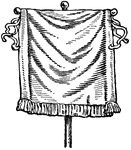
Vexillum
A flag-like object. The cloth was draped from a horizontal cross suspended from the staff. It was a…



